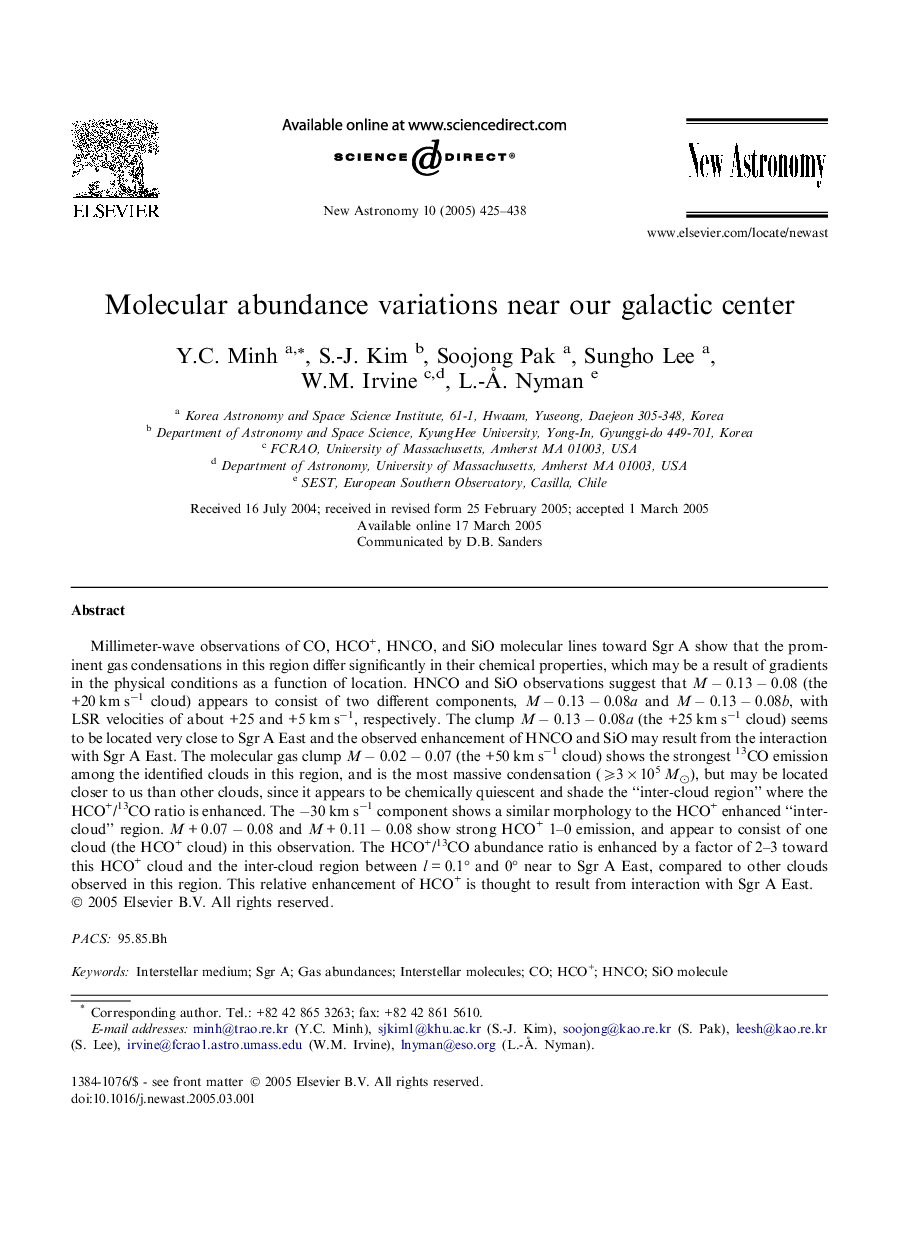| Article ID | Journal | Published Year | Pages | File Type |
|---|---|---|---|---|
| 10704647 | New Astronomy | 2005 | 14 Pages |
Abstract
Millimeter-wave observations of CO, HCO+, HNCO, and SiO molecular lines toward Sgr A show that the prominent gas condensations in this region differ significantly in their chemical properties, which may be a result of gradients in the physical conditions as a function of location. HNCO and SiO observations suggest that M â 0.13 â 0.08 (the +20 km sâ1 cloud) appears to consist of two different components, M â 0.13 â 0.08a and M â 0.13 â 0.08b, with LSR velocities of about +25 and +5 km sâ1, respectively. The clump M â 0.13 â 0.08a (the +25 km sâ1 cloud) seems to be located very close to Sgr A East and the observed enhancement of HNCO and SiO may result from the interaction with Sgr A East. The molecular gas clump M â 0.02 â 0.07 (the +50 km sâ1 cloud) shows the strongest 13CO emission among the identified clouds in this region, and is the most massive condensation (⩾3 Ã 105 Mâ), but may be located closer to us than other clouds, since it appears to be chemically quiescent and shade the “inter-cloud region” where the HCO+/13CO ratio is enhanced. The â30 km sâ1 component shows a similar morphology to the HCO+ enhanced “inter-cloud” region. M + 0.07 â 0.08 and M + 0.11 â 0.08 show strong HCO+ 1-0 emission, and appear to consist of one cloud (the HCO+ cloud) in this observation. The HCO+/13CO abundance ratio is enhanced by a factor of 2-3 toward this HCO+ cloud and the inter-cloud region between l = 0.1° and 0° near to Sgr A East, compared to other clouds observed in this region. This relative enhancement of HCO+ is thought to result from interaction with Sgr A East.
Related Topics
Physical Sciences and Engineering
Physics and Astronomy
Astronomy and Astrophysics
Authors
Y.C. Minh, S.-J. Kim, Soojong Pak, Sungho Lee, W.M. Irvine, L.-Ã
. Nyman,
